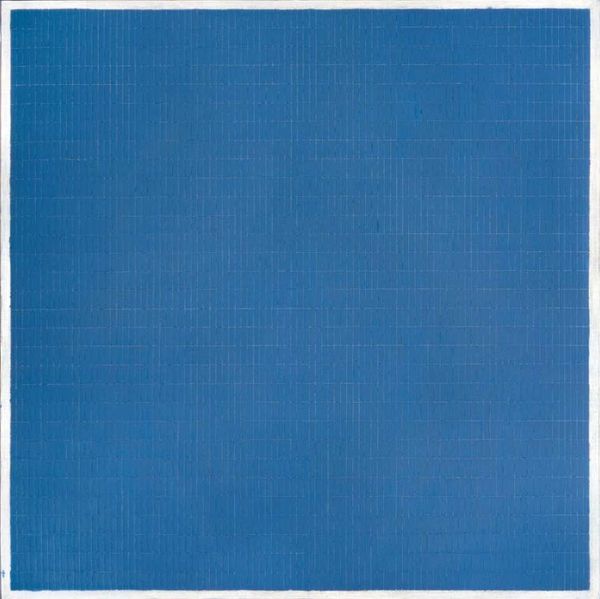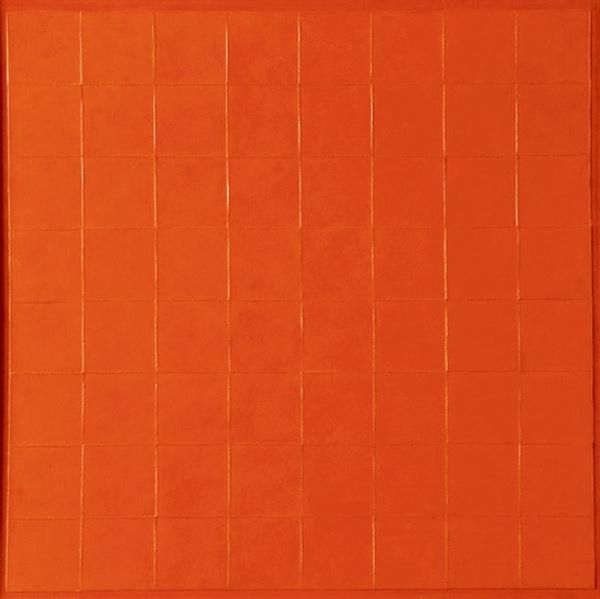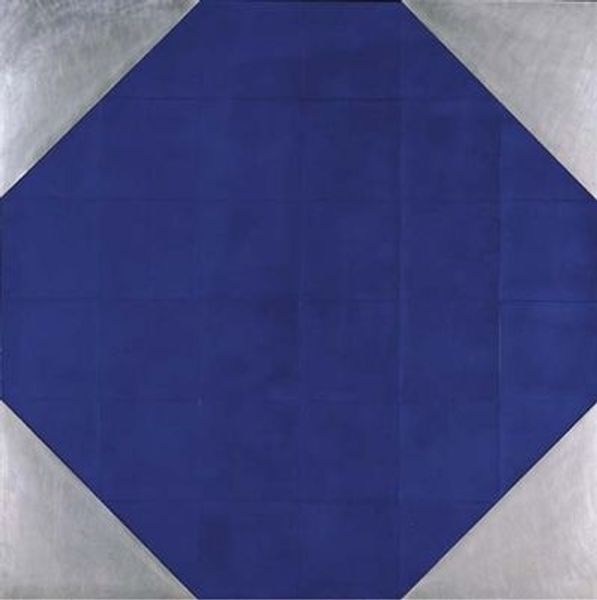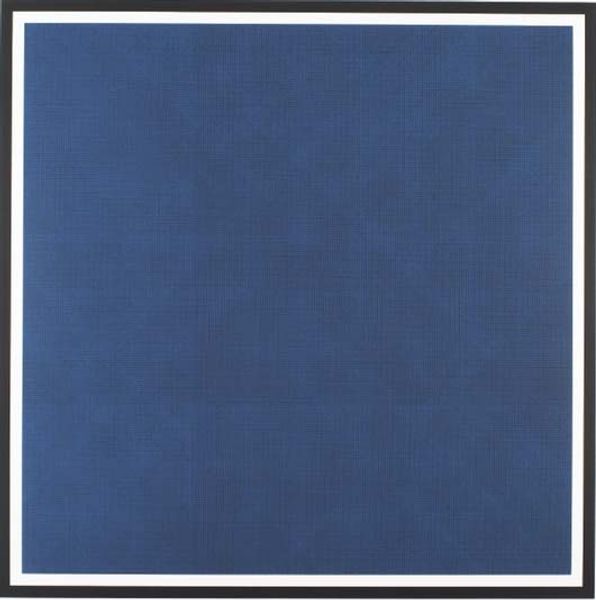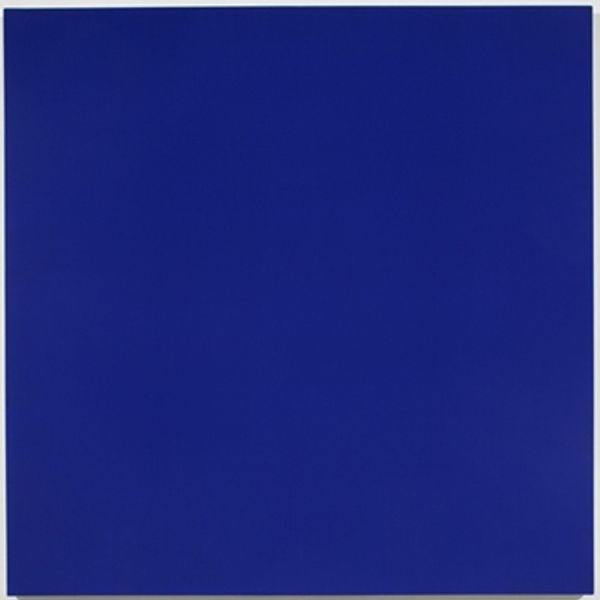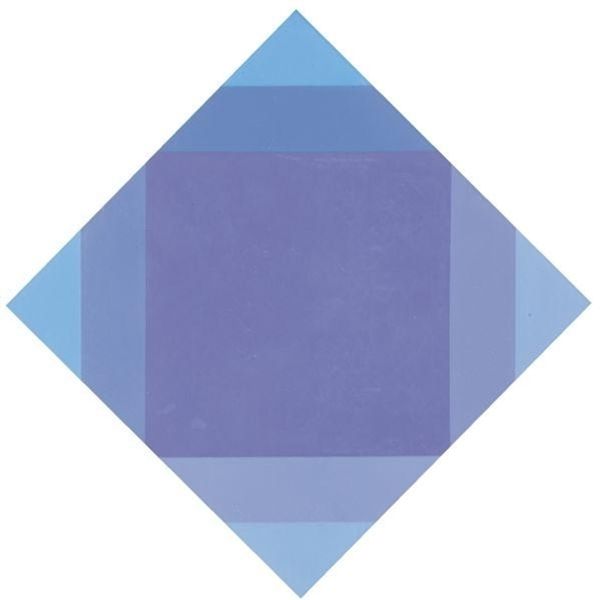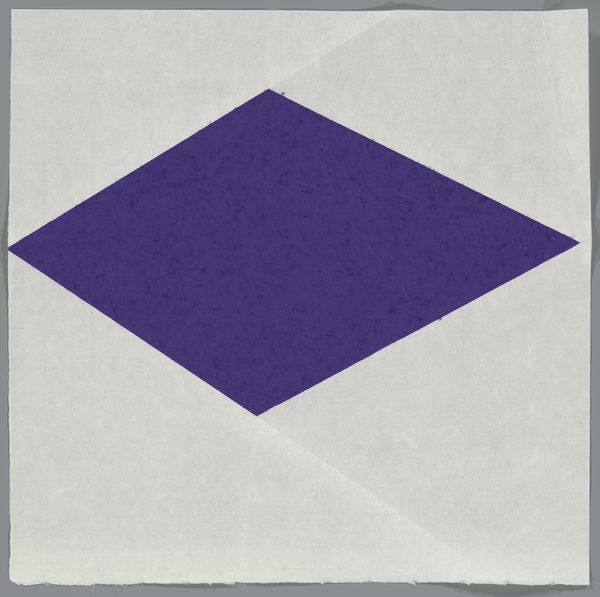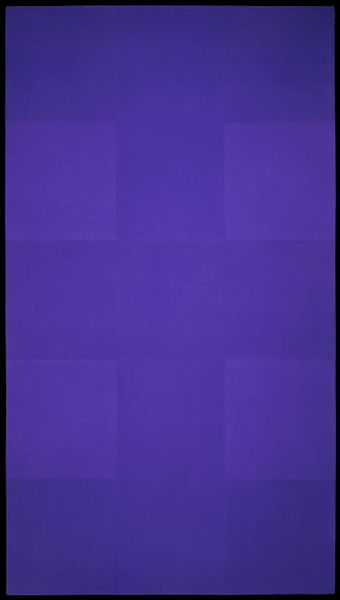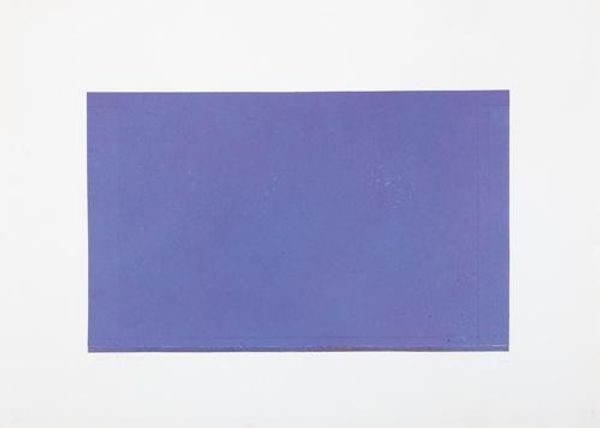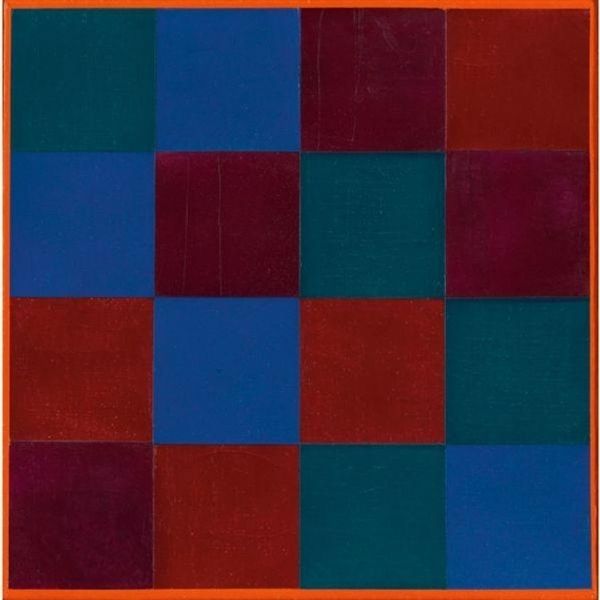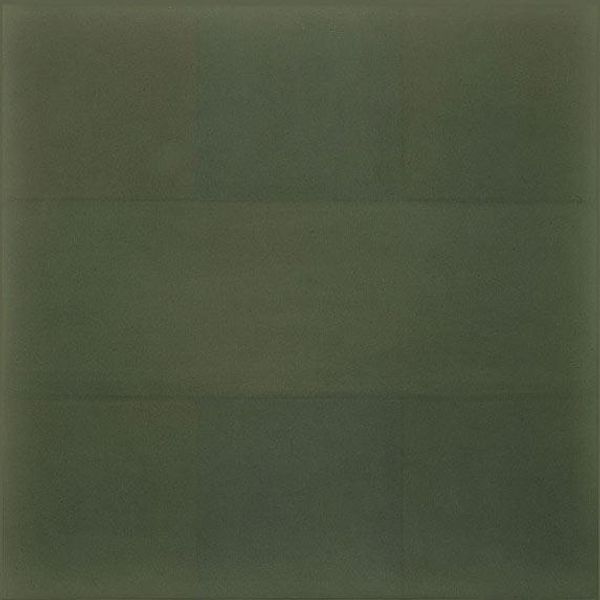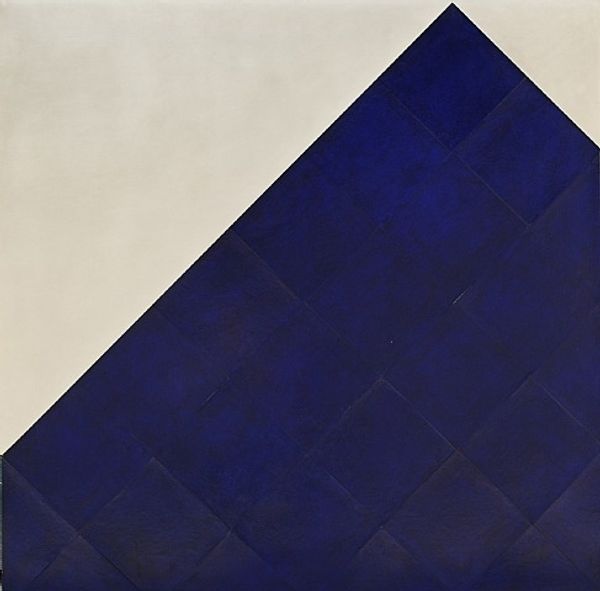
acrylic-paint
#
minimalism
#
postmodernism
#
acrylic-paint
#
geometric pattern
#
abstract pattern
#
geometric
#
geometric-abstraction
#
abstraction
#
hard-edge-painting
Copyright: Gottfried Honegger,Fair Use
Curator: We're looking at Gottfried Honegger's "Étude A-53" from 1989, created with acrylic paint. What are your initial thoughts? Editor: It's remarkably… blue. An immersive field of monochrome. The grid structure suggests a kind of formal rigor, but there’s also something subtly disorienting about the subtle shifts in hue. It evokes a certain cool tranquility, yet feels quite detached. Curator: The consistent application of acrylic, almost uniformly across each square in the grid, reveals a calculated exploration of industrial production and uniformity. Postmodern in its systematic reduction, it removes any overt expression. Editor: But look closer. There's a play of light happening within each square. They aren't perfectly identical. Tiny textural variations within the monochrome generate depth and soften its hard geometry. Curator: Yes, but even these nuances point back to a central tension inherent within geometric abstraction: that is, the tension between industrial standardization and the human element. Editor: The formal properties offer entry points. The modular construction lends itself to endless expansion or replication, a visual demonstration of seriality within postmodernism, yet contained and considered. How did Honegger approach the idea of infinite iterations with a defined boundary? Curator: Exactly. In "Étude A-53", Honegger forces us to consider how a gridded artwork can subtly question its relationship to labor and reproducibility within our material and artistic practices. How the uniformity reflects the machine. Editor: The deep blue seems calculated. A choice not simply for aesthetic pleasure but, perhaps, to invoke feelings of boundlessness while physically limited within the framework of hard-edged minimalism and its objective values. Curator: Right, but I read that feeling as more about reflecting the social drive towards imposed organization of creative endeavors during the time period, an inherent comment on industrial and creative labor practices. Editor: It's fascinating how a seemingly straightforward grid can generate such diverging ideas! Thank you, your insight on the material and the socio-political framing adds further depth to my interpretation. Curator: My pleasure. Likewise, the formal analysis sharpens how we consider even its industrial quality and what meanings can arise from it.
Comments
No comments
Be the first to comment and join the conversation on the ultimate creative platform.
